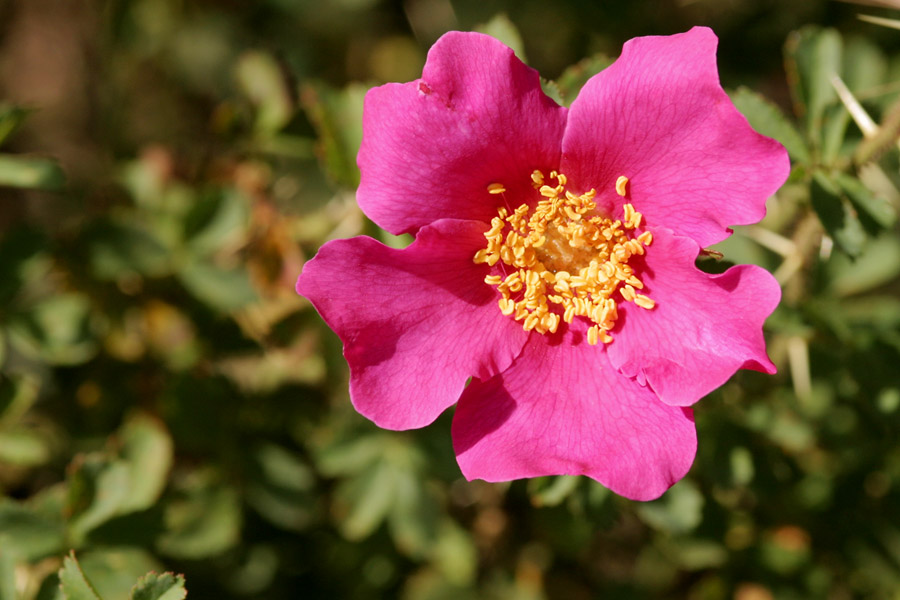
|
Family: Rosaceae |
Hypanthium globose to urceolate, with a constricted orifice; sep usually long-attenuate or prolonged into a foliaceous tip, often persistent in fr; pet large, spreading at anthesis, pink to red, white, or yellow; stamens very numerous, inserted near the orifice of the hypanthium on relatively short filaments; ovaries mostly numerous, inserted on the bottom or also on the sides of the hypanthium; styles usually barely exserted, distinct or ±united; fr a bony achene; mature hypanthium, called a hip, commonly colored and pulpy or fleshy; shrubs or woody vines, usually prickly; lvs pinnately compound with 3-11 serrate lfls, the stipules commonly large and adnate to the petiole; x=7. Genus beset with hybridization and polyploidy. 100+, mainly N. Temp. The application of the names R. spinosissima and R. cinnamomea is now so confused that both have been abandoned in Flora Europaea. We do likewise. Gleason, Henry A. & Cronquist, Arthur J. 1991. Manual of vascular plants of northeastern United States and adjacent Canada. lxxv + 910 pp. ©The New York Botanical Garden. All rights reserved. Used by permission. |
This project was made possible in part by the Institute of Museum and Library Services [MG-70-19-0057-19].
Powered by Symbiota



